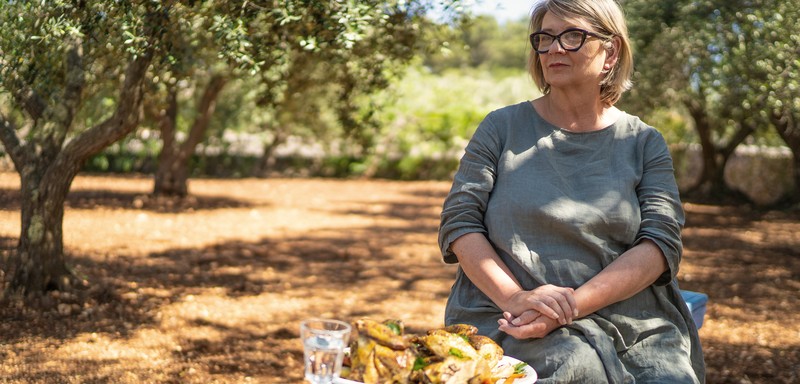
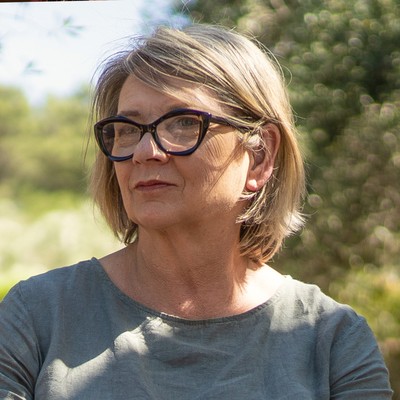
In Conversation With… Sophie Grigson
The new series has been a while in the making. The producer, the director and I hatched the idea three-and-a-half years ago, before I even left the UK. It’s based around life in the little town I live in in Puglia called Ceglie Messapica. Puglia isn’t a fireworks part of Italy, but there is something very seductive about it. There’s a great pace of life, it’s very pretty, the little towns are gorgeous and the food is beautiful.
I first came to Puglia over 40 years ago when I was 19 and backpacking and interrailing around Europe. I chose to move here by chance. In 2018, I was at home going down an article spiral on my computer and I came across a piece about a little town in the north of Puglia where they were paying people to move there, because they were having such a problem with the population. I had this sudden moment of inspiration and it was as straightforward as that. Two weeks later I was in that small town with my children. It was very nice, but it wasn't the right place for me – but it did confirm that I was going to move. Nine months later, I’d sorted out things in the UK, packed up my car and headed south.
I lived in Oxford before, so it was a bit of a change. I left the UK in April 2019. By the time lockdown and Covid-19 arrived, I’d been here about nine months. I had local friends and knew the area well enough. That first lockdown, we were a few weeks ahead of the UK, and in the north of Italy there were very high numbers of cases, so it was a scary time. Down here, we were quite lucky as the number of cases was relatively low and didn't rocket in the same way. In one way, the pandemic was like a normal lunchtime here, where everything closes at 1pm and doesn’t open again until 4.30pm. If you go out in any town in this part of Italy at lunch, it's like an alien ship has arrived and sucked out all humanity and there's nobody left – it was kind of like that all the time. It was a strange time, as it was for everyone. I was writing my new book, so I tested a lot of recipes and had few interruptions. The only pain was that I couldn’t even do exercise classes at home as my flat’s above someone else’s and I got complaints!
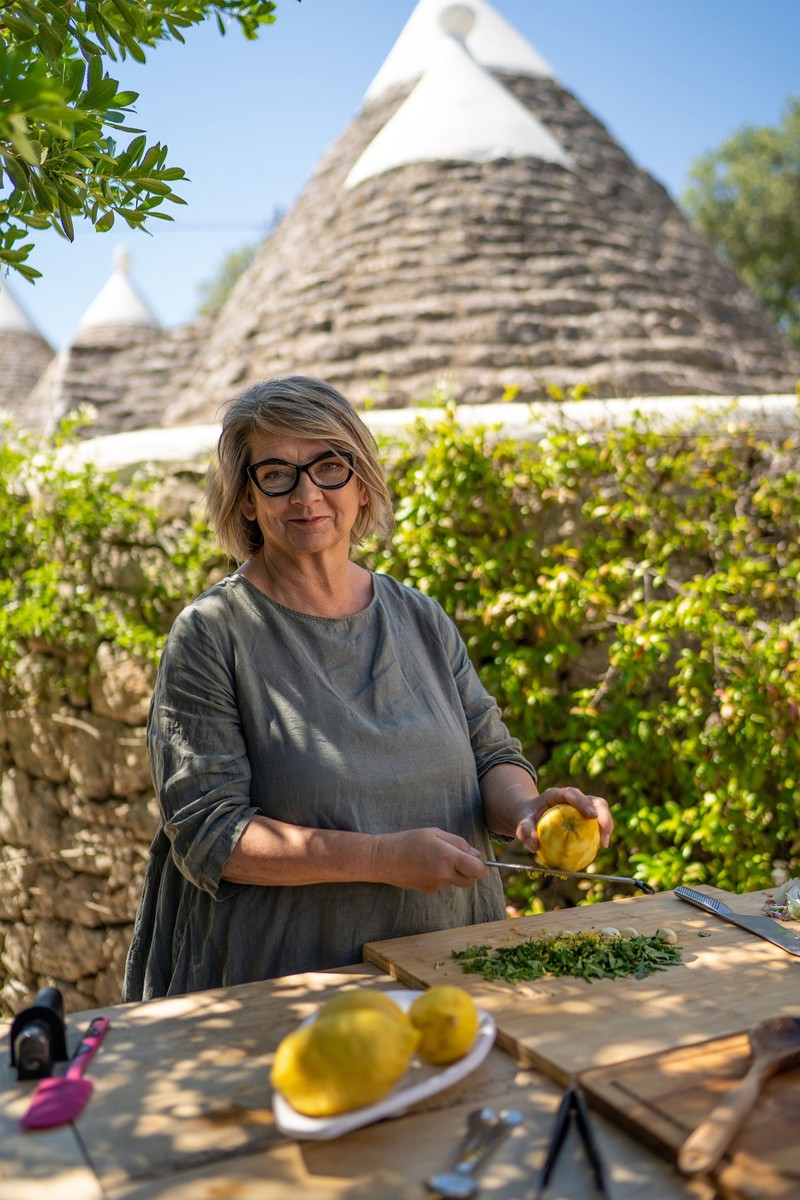
I studied maths at university but it’s very useful for writing recipes – I can work out ingredient ratios very quickly! My mother was a food writer, so it seemed like a perfectly normal career to me growing up. I fell into it really – it wasn't a deliberate choice, but I’d always cooked at home. I think it was nepotism. Somebody who knew my mother said: “Would you like to write an article for us?” I think it was because I was the daughter of my mother. And so I did. That was that was how I started – luck. And greed. I’ve always loved eating.
My upbringing was food focused. Food was a big topic around the table and we were often going out to eat. But it's a funny thing to be the child of a food writer – it’s not always plain sailing, because you tend to go through cycles of only eating one type of thing. I remember at one point my mother wrote this wonderful book on mushrooms and, early on in the process she gave us a mushroom dish with one bad one in it. It wasn’t poisonous, but it didn’t taste very nice and put me off mushrooms for a long time. But then we had a year of her testing a lot of mushroom dishes on us, which made me feel quite queasy.
I was very lucky because we spent about three months every year in France – which is where my mother’s food writing career took off. We’d visit the local food market once or twice a week, and I encountered that whole French fascination with food. In the UK in the 60s and 70s, there was a residual feeling that you didn't talk about the food you ate – it was a British thing. But in France, everybody talked about food around the table.
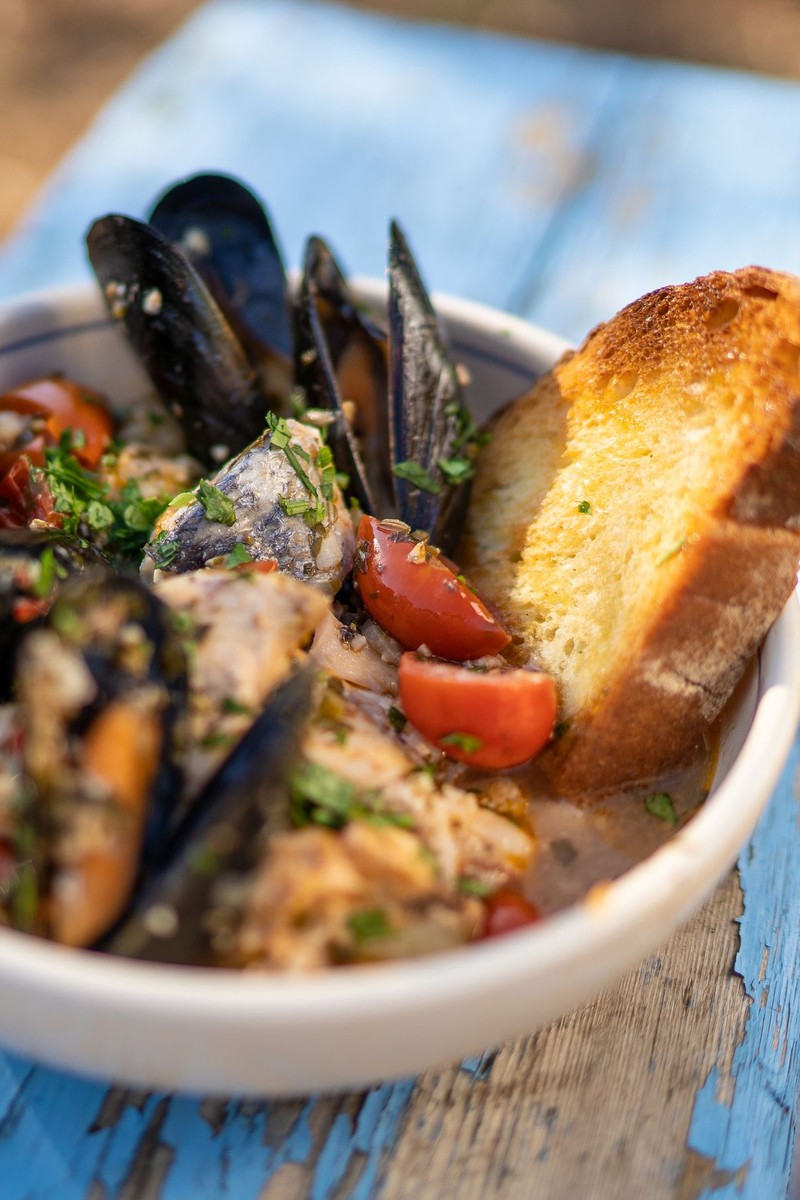
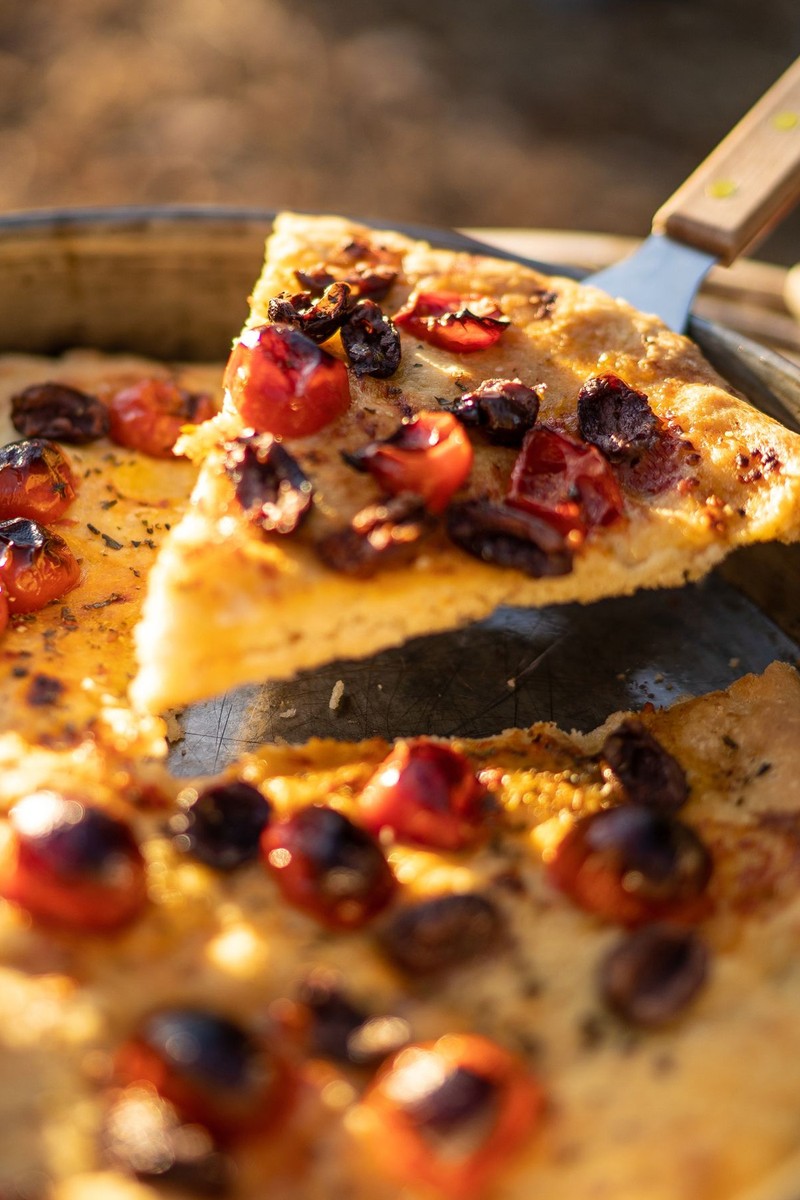
My parents’ place was a cave built into a hill. It was very, very basic. When they bought it, it was literally a hole in the rocks – this was in about 1963 – but it had great views and was part of a village of these cliff houses. Trôo was an idyllic place for a child to spend time. I had friends there and we’d end up playing all round – there weren't many cars so we could have the run of the hillside. We spent two blocks of time there each year, usually in late spring and autumn, and I went to school there. We ate loads of really nice food, even though the kitchen which was located in the old fireplace was tiny. My mother produced the most amazing meals using the most basic equipment – it was pretty much one step up from camping gear! When I took the place over, I did actually buy a new stove, thinking ‘How did my mum do this?’ I miss it, as we don’t have it anymore.
There are two dishes I remember learning to cook in France as a little girl. One of them – curiously – is a British dish that my mum loved and I've included it in one of my books. It’s a sweetmeat cake, which is an 18th-century tart. We always used to make it in France, and it turns out the Italians love it as well. It's made up of a pastry case with chopped candied peel and hazelnuts in it, filled with a mixture of melted butter, egg and sugar that’s poured over the top and baked – it's just divine. That was a favourite of mum’s and become a long-time favourite of mine. Another recipe she often used to make in the cave, which I love – although it seems very rich these days – is pork with prunes in a cream sauce. There are a lot of recipes that take me straight back to childhood – another my mother adored was a simple grilled pepper salad with capers and olives. I have that a lot down here in Italy, and whenever I make one I always think of her.
I don’t have a signature dish if I’m entertaining at home because I don't like to have favourites. It depends on the season, my mood, what the weather's like, what’s available, where I am… As a food writer, it’s dangerous to have a favourite dish because it would mean going back to all the same recipes rather than wanting to explore and discover new things. That said, there are certain dishes I go back to again and again, and I have done for centuries: one is a spatchcock chicken because you get the really crispy skin; I do endless variations on the aforementioned pepper salads; and I love simple things like a grated carrot salad. I also have a couple of fallback puddings, such as a chocolate and almond cake, because it's so damn easy and people always adore it. That for me is the perfect combination – something that isn’t too complex, that people love and think was much more work than it really was!
/https%3A%2F%2Fsheerluxe.com%2Fsites%2Fsheerluxe%2Ffiles%2Farticles%2F2022%2F09%2Fsophie-grigson-image-6.jpg?itok=FrmnU2XV)
Puglian food is very distinct. There are some little bread and cheese fritters that I just love, called polpette di pane. I made some in my kitchen once and took them down to this little bar on the corner. It was nerve-racking taking Italian food to Italians, but they really liked them. I also love tiella pugliese, which is a slightly odd gratin, because it’s got potatoes, rice and mussels on the half shell all together – they’re big on their carbs here. When it's done well, it’s really good and is a crowd-pleaser when it comes sizzling out of the oven. I also love to make a chocolate olive oil mousse – olive oil is such a big thing down here. I road-tested that on an Italian, too, and it got their seal of approval.
So often we lump all Italian food together. Most of what we know is northern Italian food – and maybe a bit of Sicilian – but the rest of Italy produces great food as well, and Puglia is no exception. It is Italian – you’ll recognise the pasta dishes – but it's done in a very particular way. That Puglian pride, the countryside, their food and the culture are all huge, so I hope people will watch the programme, enjoy it and then maybe come down next year and enjoy the real thing.
I’m well-known for my earring collection. I have no idea how many I have these days, but I think any collector gets to a magic number where even though you might buy more pairs, you never go above that number because you always lose some. Today I’m wearing a pair with a nutmeg grater on one side and a griddle pan on the other. I don’t wear quite as many as I used to and they’re not so prominent – perhaps it’s part of getting older? I’ve now got a whole new set of Puglian earrings – there’s a lot of cactus growing around here, so I have some prickly pear ones and some with trullo houses on. You’ll see them on the show.
Inspired? Here are two of Sophie’s Puglian recipes to try at home…
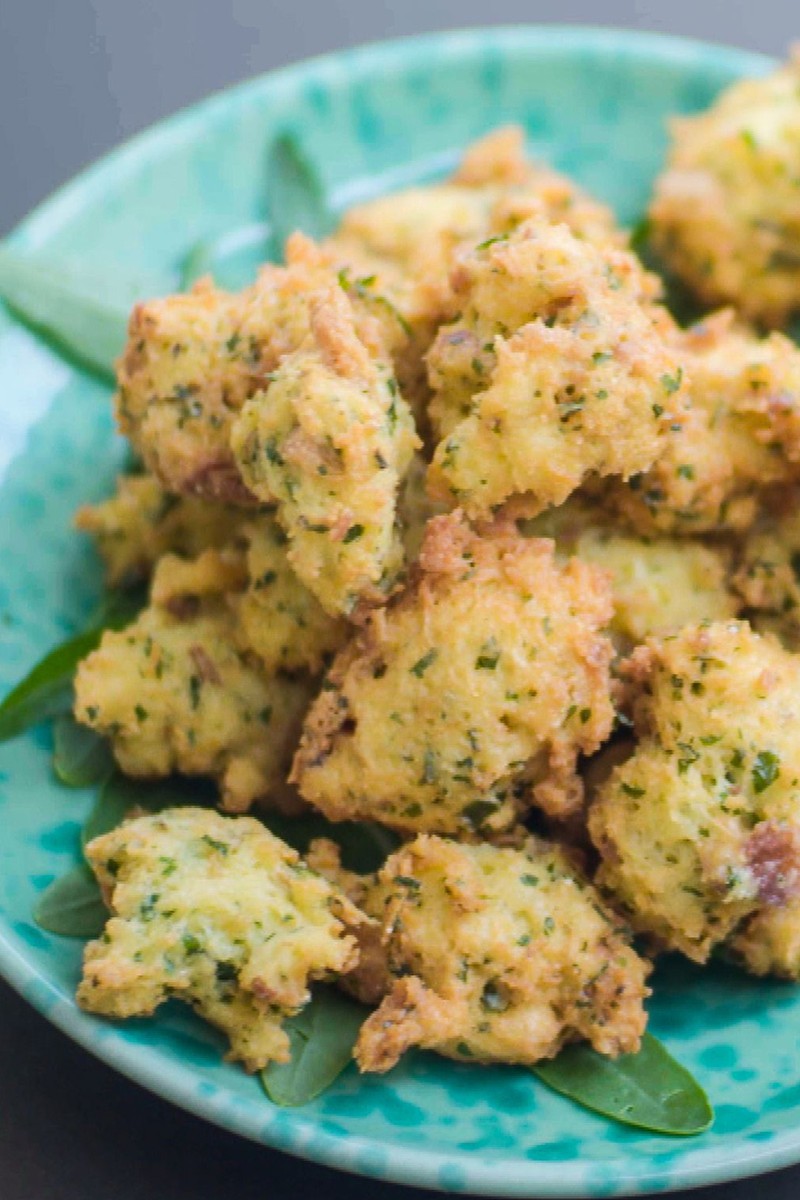
Polpette Di Pane – Bread & Cheese Fritters
Break the bread up into chunks, crusts and all. Soak in cold water for 10 minutes or so.
Squeeze out the water and plop into your mixing bowl. Beat in all the remaining ingredients except the oil. Don’t add salt – the cheese will be salty enough on its own.
Use a deep-fat fryer if you have one or, if not, heat a 7.5-10cm depth of oil in a saucepan.
Slide in a test-run dessert spoonful of the batter mix and cook until golden brown, turning carefully once or twice. This should take around 3-4 minutes. If it cooks too quickly, reduce the heat of the oil.
Drain the fritter on kitchen paper, and bite into it as soon as the heat will let you. The outside should be firm with a hint of crispness, the inside tender but set, and divinely cheesy. Add more pepper if you like.
Now fry the rest of the batter, spoonful by spoonful, until you have a burnished heap of golden fritters.

Chocolate Olive Oil Mousse
Melt the chocolate, then leave to cool for 5 minutes or so. Whisk the egg yolks with the muscovado sugar, until the sugar has dissolved. Whisk in the olive oil a little at a time to create a gorgeous voluptuous thick gloop.
Whisk the melted chocolate, a slurp or two at a time, into the gloop. You should end up with an even more voluptuous, thick, glossy, chocolatey gloop – but don’t panic if it shows ominous signs of graining. Just carry on and all will be fine.
Whisk the egg whites until they form soft peaks. Fold into the chocolate mixture. Divide between 4 small bowls or espresso cups or ramekins and chill for a few hours.
Just before serving, drip a few drops of fresh olive oil over each mousse and sprinkle with a few flakes of salt.
Sophie Grigson: Slice of Italy premieres at 9pm on Monday 3rd October on Food Network.
DISCLAIMER: We endeavour to always credit the correct original source of every image we use. If you think a credit may be incorrect, please contact us at info@sheerluxe.com.

